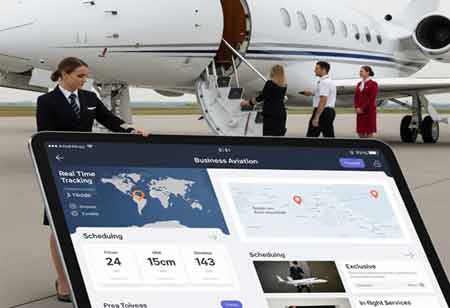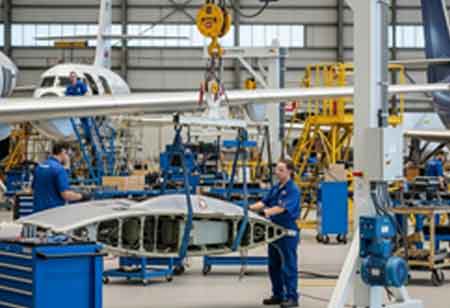Direct Field Acoustic Testing (DFAT) represents a sophisticated and specialized approach employed across various sectors, notably aerospace, defense, automotive, and electronics. This methodology is designed to assess the acoustic performance of materials, components, and systems in conditions that closely resemble their actual operational environments. Conducting DFAT in real-world settings where the product or system will ultimately function provides a distinct benefit in analyzing and evaluating sound propagation, vibration, and noise control mechanisms as they perform in their intended applications.
The Vital Role of Direct Field Acoustic Testing
DFAT offers significant advantages over traditional lab-based acoustic assessments, particularly in complex environments where real-world sound interactions are challenging to simulate. DFAT accurately replicates a product’s conditions during operation, providing engineers with a clearer understanding of its acoustic performance. In industries like aerospace and automotive, DFAT is crucial for evaluating how components such as aircraft parts or vehicle interiors respond to noise from engines, wind, and vibrations. Additionally, DFAT helps ensure compliance with noise regulations, minimizing legal risks by confirming that products meet local, national, and international noise standards.
Navigating Challenges with Innovative DFAT Methodologies
A key challenge in DFAT is replicating real-world acoustic environments during controlled testing. Various factors complicate consistent simulations, including weather conditions, surrounding structures, and sound frequencies. For example, wind speed, humidity, and temperature changes can greatly impact noise measurements in aerospace and automotive testing. Additionally, noise from external sources, such as other aircraft or vehicles, can interfere with accurate results.
Companies are increasingly integrating advanced data analytics and machine learning algorithms to process and filter out external noise, ensuring more accurate results to address these challenges. Furthermore, advancements in sensor technology are helping improve the precision of acoustic measurements by providing more detailed data in diverse environments.
DFAT faces high cost and logistical complexities, particularly in large-scale aerospace and automotive testing applications. These tests require specialized equipment and significant time and resources to set up.
Many companies are creating portable and cost-effective acoustic testing solutions, including wireless sensor networks and mobile testing units, to overcome these hurdles. These innovations allow for more frequent testing at lower costs while ensuring data quality.
The Expanding Market: DFAT’s Role in Modern Industries
The DFAT market is rapidly growing as industries focus on improving noise management, product performance, and regulatory compliance. In aerospace, DFAT is increasingly used to assess the acoustic behavior of aircraft components in real-world conditions, such as testing noise levels from engine sounds or cabin turbulence. Similarly, in the automotive industry, manufacturers rely on DFAT to refine vehicle cabin acoustics by simulating the impact of road noise, engine sounds, and vibrations during actual driving conditions. Additionally, with growing environmental concerns, DFAT is being adopted in sectors like construction and consumer electronics to ensure products meet stringent noise regulations. This trend is driven by a rising demand for quieter, more sustainable products. DFAT’s ability to deliver more accurate, field-relevant outputs makes it an essential tool in various industries aiming for innovation and compliance.
There is also a growing trend of integrating DFAT with advanced simulation tools like computational fluid dynamics (CFD) and finite element analysis (FEA) to predict and refine acoustic performance before physical testing. This integration allows companies in the aerospace and automotive sectors to simulate and optimize noise behavior across various conditions, ultimately reducing development time and improving product quality. By combining DFAT with predictive modeling, manufacturers can identify potential acoustic issues early in the design phase and address them before physical testing is required.
As global attention to environmental and public health concerns increases, DFAT is becoming increasingly crucial in noise-sensitive areas like urban planning and transportation infrastructure. Cities and municipalities are investing in noise mitigation strategies, using DFAT to evaluate and improve noise levels from infrastructure projects such as roads, railways, and airports. These efforts are aligned with growing concerns about the adverse effects of noise pollution on public health, including links to stress, sleep disturbances, and other health issues. The ability of DFAT to measure real-world noise levels and ensure compliance with local, national, and international noise regulations makes it a valuable tool in mitigating these effects.
Enhancing Acoustic Performance
DFAT presents significant opportunities for stakeholders across various industries. Integrating advanced sensor technology, real-time data analytics, and machine learning enables more accurate and efficient testing, leading to better product designs and faster time-to-market. Companies can benefit from DFAT’s ability to optimize noise reduction strategies, ensuring compliance with stringent environmental regulations and enhancing customer satisfaction.
The growing adoption of portable, cost-effective testing solutions and simulation software allows manufacturers to conduct more frequent and affordable assessments, reducing costs and improving product performance. As industries strive for quieter, more sustainable products, DFAT provides stakeholders with a valuable innovation and regulatory compliance tool. It’s time to prioritize DFAT in development processes and contribute to a more sustainable and noiseconscious future.









